| Early Spring Date: | April 9 |
| Late Spring Date: | May 31 |
| Best Dates to See in Spring: | April 25 - May 23 |
Spring: The Northern Parula is the smallest warbler species to visit Monticello Park each spring and one of the most common. Parulas start to arrive in the second half of April and remain through most of the rest of migration. The best time to look for them is during the first two weeks in May. They nest in the Washington metro area, but not at Monticello. They prefer deciduous forests, usually near water, and they have a special fondness for sycamores.
Fall: Northern Parulas are not nearly as common during fall migration as they are in spring. The most likely time to see one is from mid-September through mid-October.
Where to See Them in the Park
Northern Parulas forage at all levels — in the canopy, mid-story, or a little above eye level. They frequently go into the stream to bathe and drink, and they sometimes take long baths. Occasionally, more than one will enter the stream together, and they are often seen in the stream with other species.
Physical Description
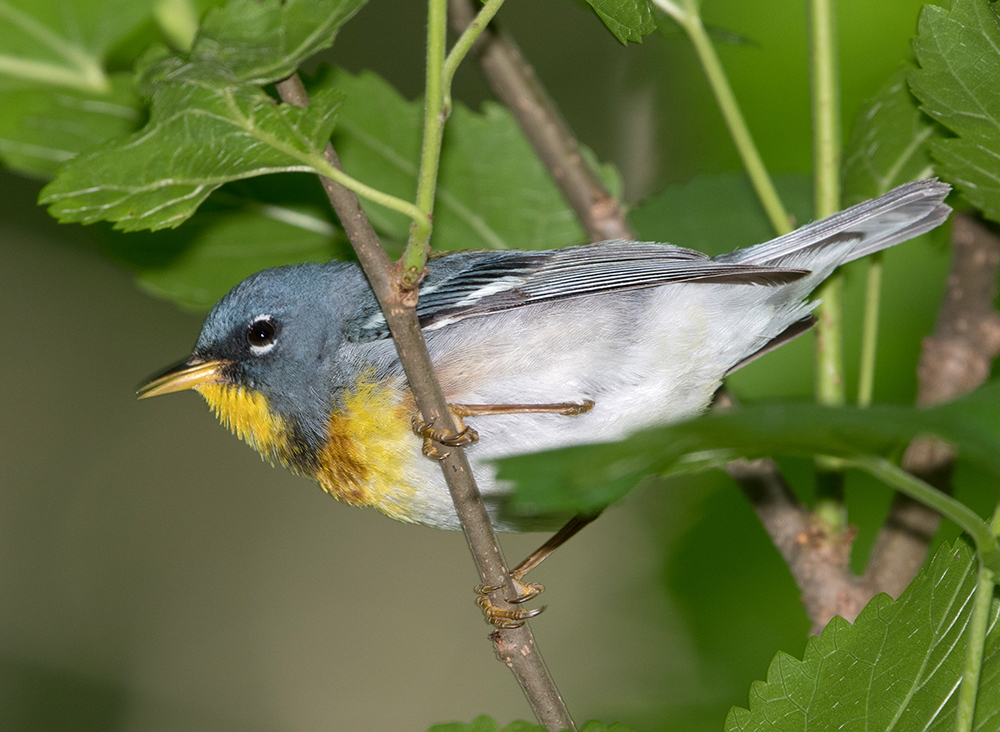
Northern Parulas are small, short-tailed warblers. The male has a blue head, a dark eye surrounded by a broken eyering, and black lores (the feathers surrounding the bill). He has two white wingbars, his throat and breast are yellow, and he has a blue breastband with reddish-brown feathering under it. The rest of the underparts are whitish. The bill is two-toned, with the upper mandible dark and the lower mandible yellow.
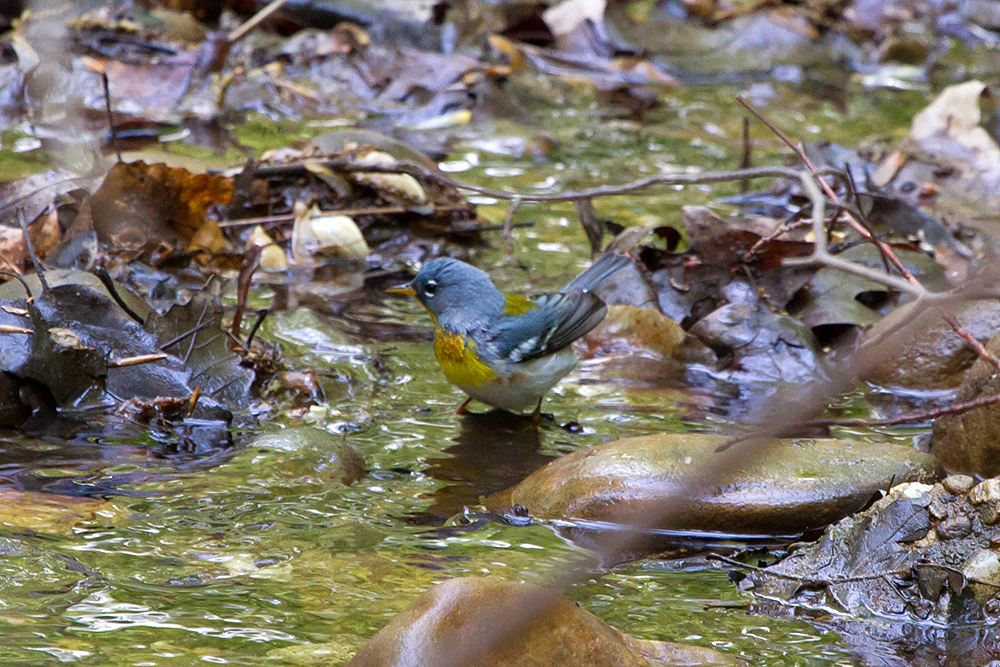
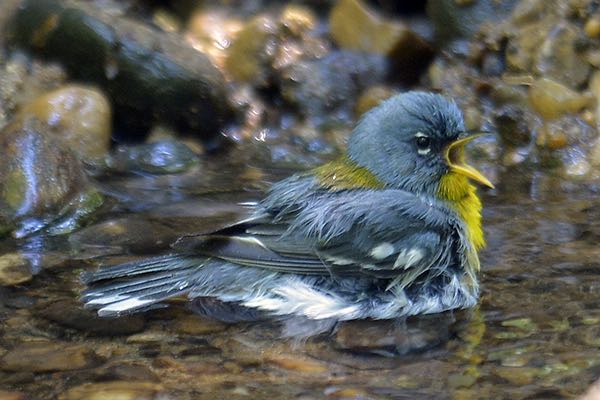
Northern Parulas seem to enjoy bathing. When looking down on one, you can see the patch of olive feathers on the back, a fieldmark that cannot be seen on a bird high in the trees.
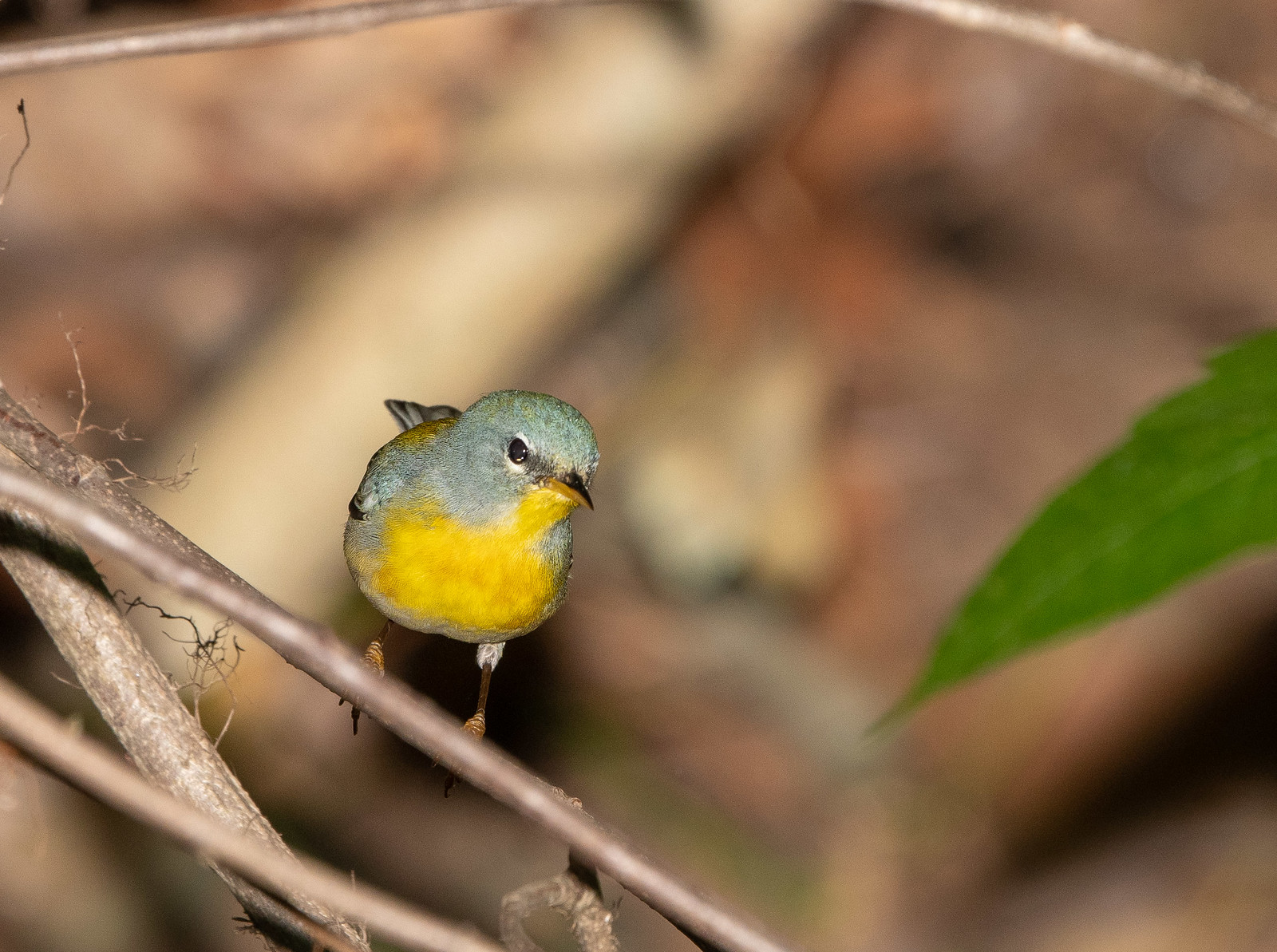
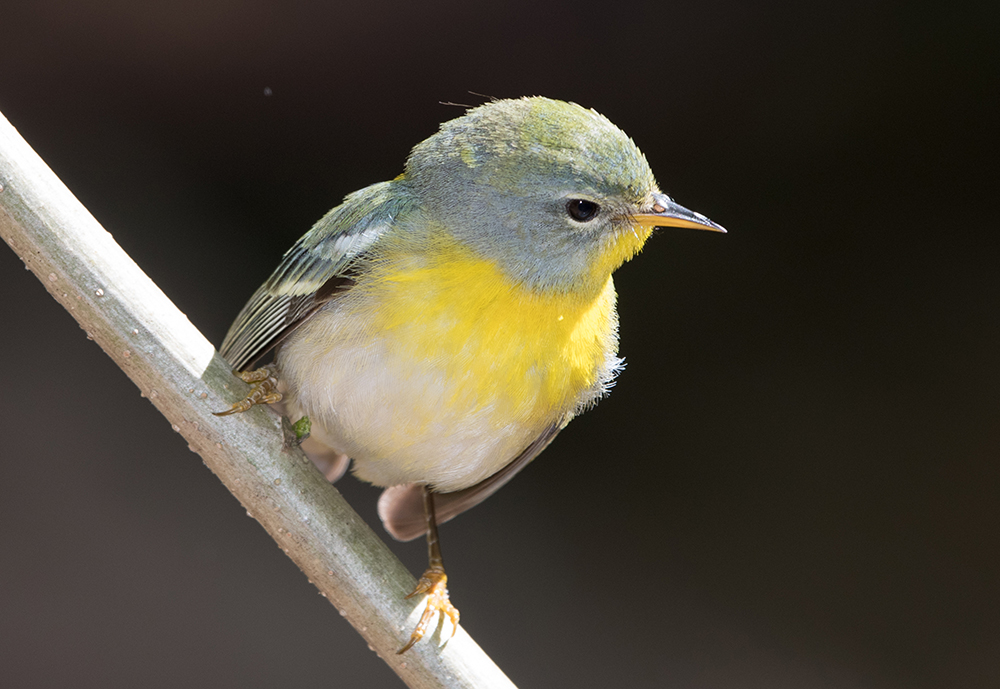
The female has duller plumage than the male, and the breastband is either fainter or absent. The amount of yellow on the breast can vary. The lores are grayish rather than black.
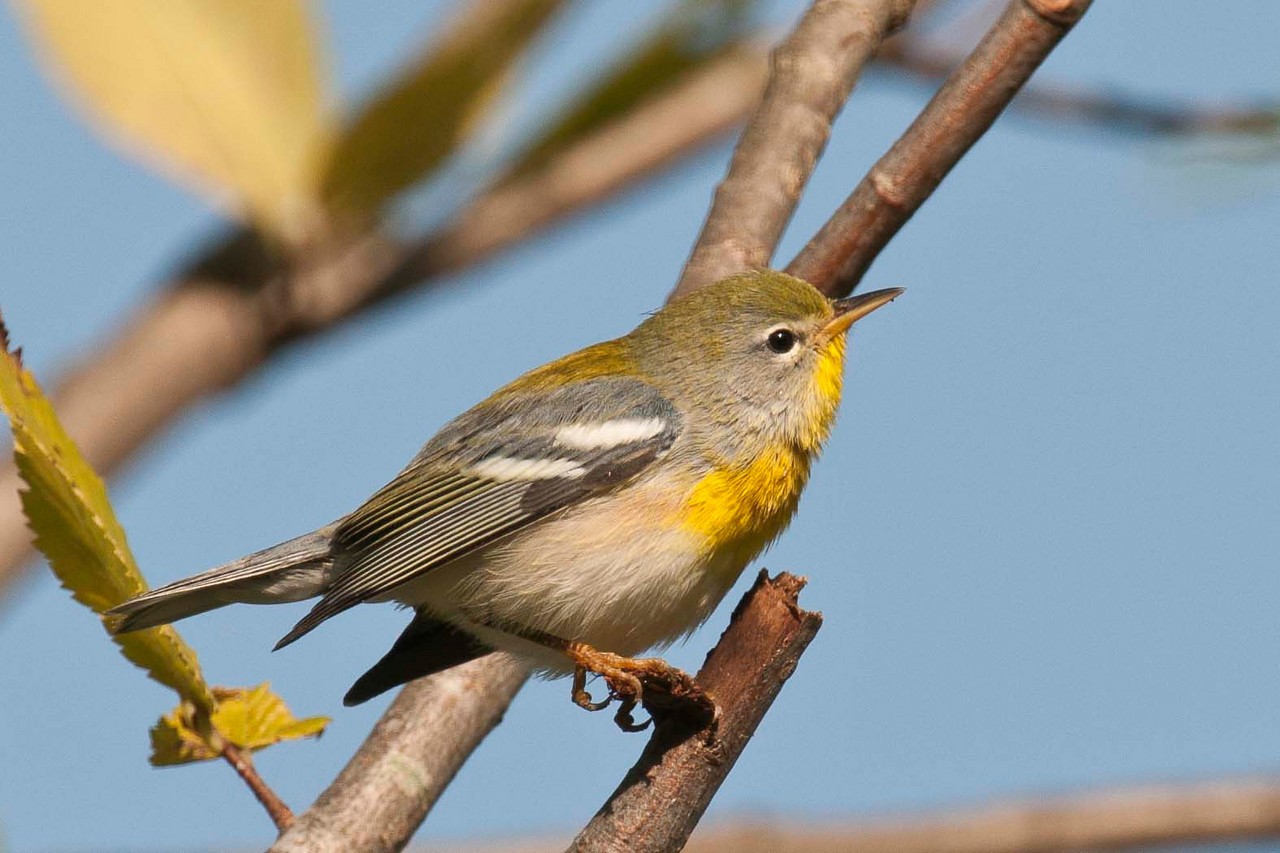
Fall: Adult fall birds are duller than their spring counterpart for each sex. Fall first-year males have more of an olive wash than adult males. Fall first-year females look paler than fall first-year males. For both sexes of first-year birds, the small size, two white wingbars, and olive back are important fieldmarks.
Vocalizations
A common song of the Northern Parula is a buzzy trill that gets progressively higher before dropping over the top. Other Parula songs lack the dropoff at the end and can be more difficult to identify.
Hear the vocalizations of the Northern Parula.
Notes
People disagree about how the name of this species should be pronounced. Some say PAR-uh-la. Others say PAR-you-la. And still others say pa-ROO-la, with the accent on the second syllable. The third option is probably preferred, because the name of the warbler family is the Parulidae (pa-ROO-li-dae), with the accent on the second syllable. A lot of people call them Parula Warblers, even though the official name is Northern Parula. In conversation, the way you pronounce the name and which name you give it does not matter as long as people know which species you are talking about.
Origin of Names
Common Names: Northern distinguishes it from the Tropical Parula found farther south. Parula means little titmouse.
Genus Name: Setophaga means moth eating.
Species Name: Americana means American.
Northern Parula video footage
Return to the Index
